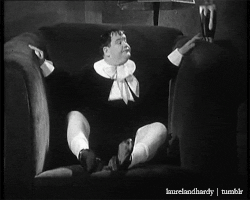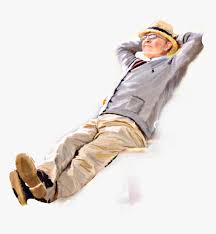|
|
Post by RLFoster on Dec 5, 2019 9:16:36 GMT -6
Thank you once again to those of you who voted in my little poll to determine my next build. By a clear majority, the OSM members picked this kit from the five available:
As indicated in the poll, this will be primarily an out of the box build of what appears to be a very nice kit. I may end up adding some stowage or other onboard equipment just to give the build some character, but that's still up in the air. I'll be skipping the Panzergrenadier figures that are included in the kits since they are all dismounted and in various "assault" poses.
Trying to nail down a time frame and theater has been difficult, but certainly not impossible. The riveted version of the Ausf C halftrack began production in late 1941 and continued for about a year...about the same time as the Ausf B ceased production. That gives the most likely theaters as being the French Campaign, year one on the Eastern Front, or North Africa. The only actual wartime photo of a riveted Ausf C that I've been able to find is in fact of a vehicle from the 10th Panzer Division in Tunisia in January 1943. There are many photos of non-riveted Ausf B and C halftracks from other units in North Africa in 1942 - 43...both Afrika Korps and ancillary units. There are also numerous photos - some in color - of non-riveted Ausf B and C vehicles in France and on the Eastern Front, so there are some good references for both.
It really comes down to the ultimate finish I want to go for on this build. I'm leaning away from France as that would likely be a plain grey finish with very little weathering. An Eastern Front vehicle would also be grey, but the weathering could be quite a bit heavier and might even include an application of "mud camouflage" as was common. North Africa presents the greatest diversity in finishes. Overall grey vehicles were common early in the war and only tanks were consistently camouflaged later on. By the time the Germans were pushed back into Tunisia, the practice of over-spraying all combat vehicles with various sand colors was becoming common, but replacement units shipping in from France were typically uncamouflaged. So either a heavily weathered grey vehicle or one with sand paint over the grey are both possible.
However, finish is something that can be finalized well down the road. I should begin working on the model in the next couple of days and posting updates shortly thereafter.
Until next time...
|
|
|
|
Post by JCON on Dec 5, 2019 13:37:03 GMT -6
I'm very excited to see this hit your bench!!!  |
|
|
|
Post by dogfish7 (R.I.P.) on Dec 5, 2019 17:23:29 GMT -6
In my easy chair. 
|
|
|
|
Post by JED on Dec 6, 2019 1:25:18 GMT -6
Looking forward to this 👍
|
|
|
|
Post by BUCKY on Dec 6, 2019 14:00:53 GMT -6
I always liked "Half-tracks", so I'm in for this one!!!
|
|
|
|
Post by RLFoster on Dec 6, 2019 15:44:59 GMT -6
Well, I was hoping for more time at the bench today, but as most of you likely saw, we had a tragedy down here at NAS Pensacola. I ended up spending quite a bit of the day glued to the TV and the internet getting updates on the shooting. That said, I still managed to get in quite a bit more research – which I'll hold off on explaining until later – and about 2 hours at the bench. For being a kit from 2004, this thing is amazing me with the level of detail. The very first step in the instructions was to put together two of this little assembly and attach it to both sides of the lower hull...out of THREE individual pieces!  The only bad thing so far is that most the larger parts (and we're not saying BIG) have 3 to 5 individual attach points that all need to be removed and then cleaned up. After two hours, I managed to finish up all of STEP 1, but unfortunately most if not all of this stuff will not be visible after assembly:  Until next time... |
|
|
|
Post by dogfish7 (R.I.P.) on Dec 6, 2019 17:14:48 GMT -6
Structural integrity, is what we like to call it. Nice work.
|
|
|
|
Post by JED on Dec 7, 2019 0:30:07 GMT -6
Looking good Robert
|
|
|
|
Post by JCON on Dec 7, 2019 11:35:30 GMT -6
Great start, glad you are safe from that tragedy that happened yesterday there!!!  |
|
|
|
Post by RLFoster on Dec 7, 2019 16:53:20 GMT -6
Even though I've been a bit distracted again today – this time by college football games, including a Regional Division II win by our own University of West Florida Argonauts – I still managed to get in another 2+ hours at the workbench. While I didn't get a whole lot of actual building done, what I did finish was filled with more outstanding detail that continues to amaze me. STEP 2 of the instructions was comprised of the 12 main suspension arms for the track wheels and a couple other minor parts. Here's a shot showing some of these parts in place:  STEP 3 involves building the front suspension assembly. While many kits might use 3 or 4 parts for this component, this kit uses 7 different parts and if you are very careful (as I was) you can build up the assembly in such a way that the front wheels will be able to be turned left or right, as seen in this photo:  I'm also going to leave this assembly unattached until the tracks and all the main running gear can be affixed so I can make sure the front tires sit flat on the ground. “Floating” front wheels are the biggest single problem modelers will experience when building halftracks. However, this design does allow a modeler to display this vehicle on uneven terrain. This photo shows the suspension dry-fit into the front plate (also not glued in place) with the assembly pivoted with on axle much higher than the other:  Hoping to get in another good day at the bench tomorrow. Until next time... |
|
|
|
Post by JCON on Dec 7, 2019 19:43:04 GMT -6
Nice detail and assembly!!!
|
|
|
|
Post by RLFoster on Dec 8, 2019 13:41:13 GMT -6
I hope everyone is having a great weekend. Today's update is a bit smaller, but also informative for anyone who wishes to tackle one of these halftracks. I did a little more research this morning (more on that later) before heading back and intending to get in at least two more good hours at the bench. Looking over the instructions, I knew that I did not want to accomplish all of STEP 4 as it involves installing all of the wheels on the build. I do not intend to install these parts until either just before painting or after...I'm still deciding. However, STEP 4 also has the builder attaching these parts:  I spent a good 30 minutes getting the parts cleaned up and ready to install and then started really looking at both the parts and the instructions. As you can see, the instructions are asking you to install the parts with the cut-out side facing UP on the model (the bottom of the halftrack is up in this image). That did not make any sense to me as I clearly thought these were the bump-stops for the wheel swing-arms. They would stop the arms from going too far upward over rough terrain and potentially breaking the torsion bars. So, I stopped what I was doing and returned to my office to do a quick online search (I have no computer online access in the hobby room). Sure enough, after only a couple minutes I found numerous photos of either knocked out halftracks or ones being refurbished that show this:  The parts are indeed supposed to be installed exactly as I thought and rotated 180 degrees from the way the instructions would have you install them. With that cleared up, I returned to the build and installed the parts correctly. While I started to clean up some other parts, nothing else important has been completed, so here's a shot of the lower hull as it stands now:  As for this morning's research, I'm really looking at trying to replicate a halftrack from one of the Panzer Divisions as their support infantry were usually the first units to get them. However, since most of those units involved in either the Polish or French campaigns would have already been outfitted with Ausf A and B halftracks, it makes sense that those divisions created prior to or during the first part of the Russian campaign would get Ausf C vehicles. That's about as far as the logic goes at the moment and I'll update my thinking more as the build progresses. In addition to my normal weekly brewery run, tomorrow will also be a Christmas shopping day for me. Therefore, don't look for another update until at least Tuesday and thanks for all of the interest thus far. Until next time... |
|
|
|
Post by dogfish7 (R.I.P.) on Dec 8, 2019 15:35:14 GMT -6
Good save Rob! That would be hard to fix later. Always good to research your build ( BEFORE ).
|
|
|
|
Post by JCON on Dec 9, 2019 0:17:48 GMT -6
Excellent save indeed!!!
|
|
|
|
Post by Dukemaddog on Dec 9, 2019 13:58:02 GMT -6
Brilliant save Robert and congrats on getting bench time. Despite my best efforts, I didn't get any time on the bench! Thanks for letting me live vicariously through your efforts.
|
|
|
|
Post by JED on Dec 11, 2019 13:48:41 GMT -6
Nice spot Rob,I suppose a bit like measure twice cut once! Nice Filey work too
|
|
|
|
Post by RLFoster on Dec 11, 2019 15:13:56 GMT -6
Happy Wednesday, Everyone! After taking two days off to take care of beer drinking, Christmas shopping, and general domestic chores – like laundry – I got back to the bench today and spent a leisurely 2.5 hours or so making my way through the next three construction steps. STEP 5 had me starting the work on the crew compartment by attaching the surprisingly detailed crew seating benches – with their under seat stowage – as well as the driver and co-driver seats and associated components:  Everything went together smoothly and I quickly moved on to STEP 6. This step was the very simple construction of the main dashboard assembly and steering wheel:  STEP 7 is very simply the attachment of these two assemblies together. The instructions make provisions for assembling the driver figure that's included in the kit and the online forums make sure to emphasize that a builder MUST put the figure in place before final assembly as the figure does not fit after everything is put together. However, since I'll be leaving the driver out, this step was easy:  Now that the main crew compartment is done, my only concern is the fact that the floor does not sit down on the lower framework, but floats of posts about 2mm above that assembly:  I will not be glue this part in place until I determine whether this gap is supposed to be there for the side panels to fit properly. Even then, I may try to figure out a way to leave this unattached for painting, but that's for a later day. Until next time... |
|
|
|
Post by dogfish7 (R.I.P.) on Dec 11, 2019 15:46:02 GMT -6
Seems like a hard to manage steering wheel.
|
|
|
|
Post by RLFoster on Dec 12, 2019 9:53:28 GMT -6
Seems like a hard to manage steering wheel. Yes it does, Bruce!
I've often wondered why the steering wheels in the majority of WWII German vehicles (except actual cars) were all tilted like this...another thing for me to Google someday.
|
|
|
|
Post by JED on Dec 12, 2019 12:04:11 GMT -6
Looking good Bruce, yet more nice detail in the kit
|
|
























